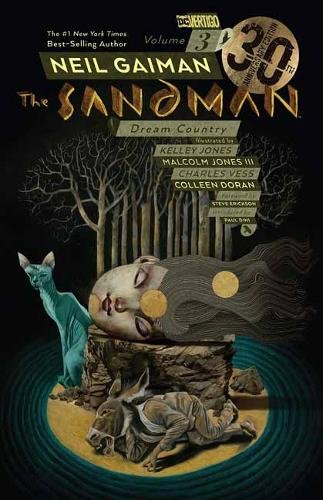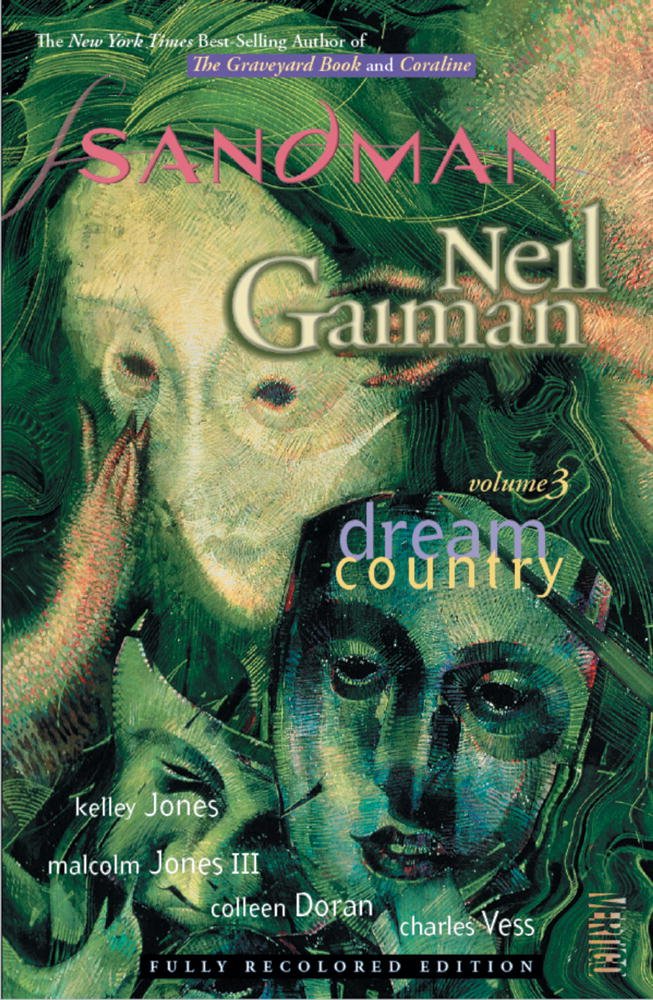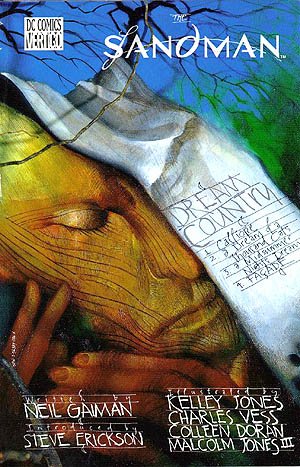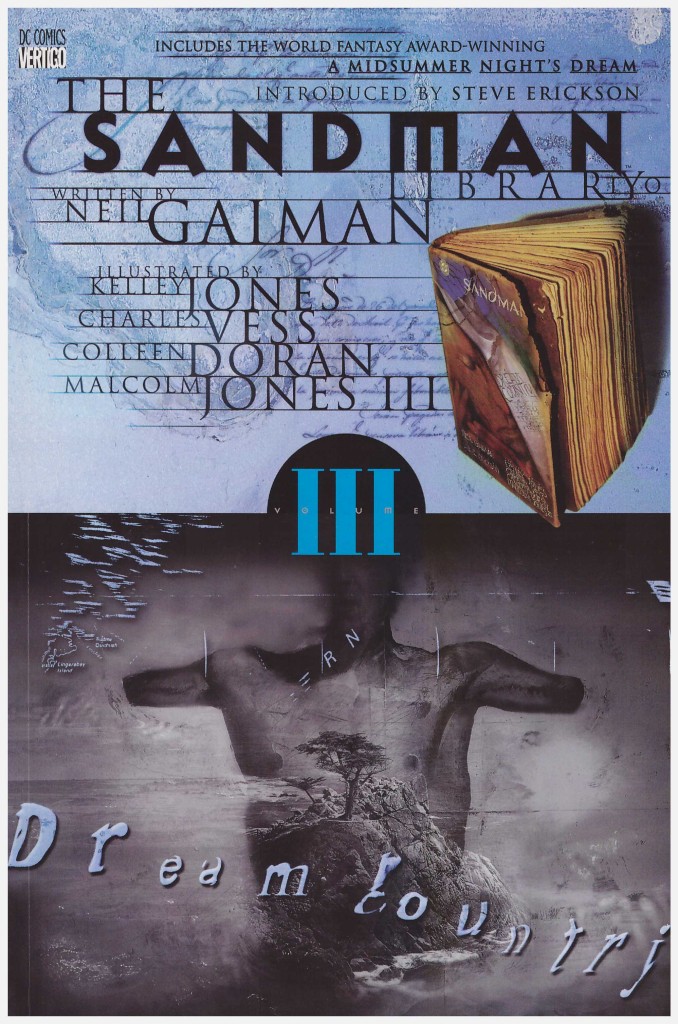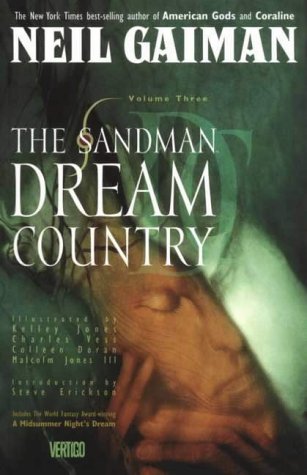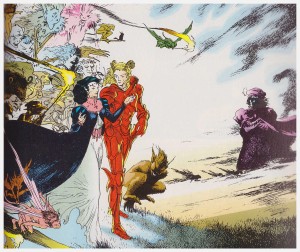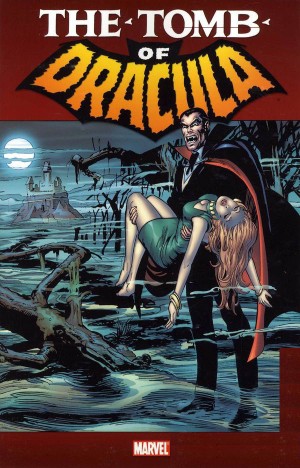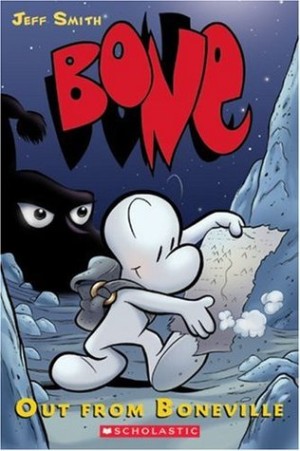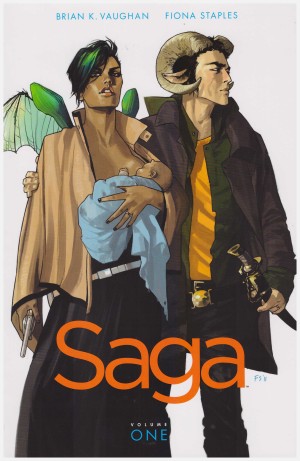Review by Karl Verhoven
It’s with Dream Country that Neil Gaiman finally settles his vision for Sandman. The horror stories with which the series began have been discarded in favour of Gaiman realising he’s created the format to tell any kind of story he wants, and why should he waste that opportunity. This book may clock in at half the page count of the previous numbers, but it packs in twice the variety, and there’s no necessity to have read the preceding Doll’s House to understand the presentations here.
The best known is ‘A Midsummer Night’s Dream’, illustrated by Charles Vess. It won the 1991 World Fantasy Award for Best Short Story, and generated plenty of debate thereafter as to whether comics should be eligible for the category. They’ve not been since. It’s a brave move for any writer to weave Shakespeare into their story, and braver still to imply A Midsummer Night’s Dream was created in order to entertain the true faerie folk, yet, remarkably, Gaiman pulls it off. Vess has a delicacy about his art and his wispy cast set the mood. It’s mentioned that Morpheus commissions a second play from Shakespeare, ‘The Tempest’, and this reprise concluded the original Sandman series in 1996, and can be found in The Wake.
It’s Kelley Jones, channelling Bernie Wrightson, who contributes most art here, illustrating two stories embellished by regular series inker Malcolm Jones III. ‘Calliope’ is the last real horror story of the series, and already moving well away from the previous material, as Gaiman tackles writer’s block via Richard Madoc. “Do you know what it’s like…”, wails Madoc, “when you can’t think of single thing worth saying, a single character that people could believe in, a single story that hasn’t been told a thousand times before?” Storytelling becomes an over-arching theme of the entire series, and this early offering provides a novel solution to the blockage problem.
Jones’ second tale is more celebrated, as we dip into the dreams of cats. The pages drip Gothic excess as Morpheus manifests at the request of a cat, and Gaiman expounds on the subjugation of pets and the power of dreams. It’s somewhat twee in places.
Colleen Doran draws the final tale, as Gaiman dredges up a DC obscurity, reviving the female counterpart to Metamorpho. Her ability to transform into any substance was once employed by covert agencies, but it betrayed her, and she’s now depressed, isolated and lonely, yet unable to commit suicide. There is no Morpheus here, just Death.
As this is a very slim package, basically interludes spanning two longer tales, the book is completed by Gaiman’s chatty script for ‘Calliope’. It offers insight also found as this content is reprinted in black and white as part of the first The Annotated Sandman, supplying copious notes regarding inspiration and influence.
In 2010 the content was re-mastered for the luxurious reproduction of the slipcased hardcover Absolute Sandman volume one. These same re-mastered pages are also in the first volume (of two) of the Sandman Omnibus, and printings of Dream Country since 2010 have also used these pages. The earlier Sandman stories weren’t presented as well as they might have been in production terms, and for those on a budget, it’s still worth springing for a post-2010 edition of the paperback rather than the muddier earlier printings. Season of Mists is next.
